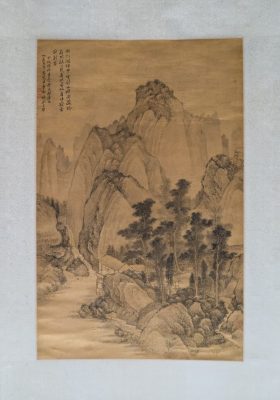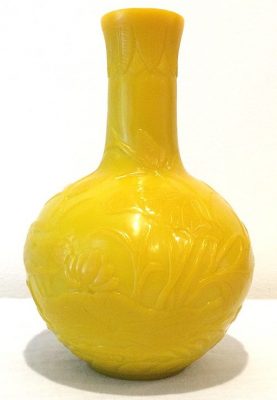The Qing dynasty controlled China from 1636 to 1912; the rulers were the nomadic Manchus who took over China when a rebellion weakened the Ming dynasty. It was the second time China was under the rule of another ethnic group other than the Han Chinese. The Manchus thus observed the culture of the Han Chinese long before they overthrew the Ming dynasty intending to assimilate to the culture of the people. They were supporters of the flourishing of the arts. In particular, the Qianlong emperor was known to have a great appreciation of paintings and calligraphy, purchasing 4,000 works during his reign.
Buddhist Influences
The Qing emperors were overtly Confucian, upholding several shamanistic traditions and celebrations. Still, they practiced Tibetan Buddhism in private to maintain their connections to the Tibetans and Mongols, with whom they had diplomatic alliances. Thus, the imperial family had Buddhist temples built with elaborate Buddhist sculptures of deities. The rulers had art made for these temples and their palaces in Chinese, Nepalese, and Tibetan styles. These pieces had a resemblance to art during the Mongol Yuan dynasty.
In 1697, under the Kangxi emperor, the Zhongzheng Hall Scripture Recitation Office was proclaimed the official workshop from which Buddhist art was produced. The common elements of Buddhist statues emphasized beautiful proportions for each figure. Buddha and other deities are depicted with the use of the precision casting technique and patterns for the specific body deemed appropriate. Many of the pieces made in the workshop were gifted by the emperors to friends and special guests of the emperor. The support of the leader at the top of the social hierarchy encouraged Buddhist monks to journey throughout China during the beginning of the Qing dynasty.
Qianlong emperor was considered the most passionate patron of the arts; he asked his Imperial Preceptor to gather numerous illustrations of 360 Tibetan Buddhist deities to be used as a reference for the statues to be made in the Zhongzheng Hall Scripture Recitation Office. His collection had texts translated into four languages showing the emperor’s multiculturalism.
The Qianlong emperor’s figure of Lobsang Palden Yeshe was one of the notable statues that displayed the attention to the intricacy and Tibetan and Mongolian influences that the Qing emperors applied. Gilded cloisonné enameling provided the exotic details of the statue.
One of the embodiments of the Buddhist influence on art during the Qing dynasty was a painting of the emperor as the Bodhisattva of Wisdom. Qianlong employed the Italian Jesuit Giuseppe Castiglione as a painter in his court to make a thangka, art on cloth, of his image seated while holding the wheel of the law. The background portrays Tibetan-style illustrations of clouds and a mountain. Castiglione used chiaroscuro and linear perspective to add depth to the art piece. In another piece, 108 deities are seen in the painting in vivid colors with lavish decorations surrounding them.
Chinese Paintings
Traditional Chinese paintings of the Qing dynasty displayed the contemporary painters venturing into more modern techniques while maintaining the subjects of the past. Meanwhile, individualistic painters developed their own styles. Examples include Shitao and Kuncan, who specialized in landscapes with dense strokes. Hong Ren drew intricate mountainous scenery, while the Anhui masters drew inspiration from the Yuan dynasty’s Ni Zan and his simple line art.
Lastly, court-appointed artists were the third group of painters who were given orders from the emperor. Their art would be dependent on the style that the emperor commissioned. For example, the Kangxi emperor had many paintings in which he illustrated in scholarly scenes. One painting depicts him holding a brush at his desk.
Pottery
Qing Chinese pottery was prized in the West due to the bright hues and complex but delicate decorations that were placed on these vases, drinking vessels, and plates. These pieces contained floral and nature-themed scenes. Ceramic art was not considered up to par with that of the Ming or Song dynasty. The artistic superintendent Lang Tingji of the 1700s attempted to remedy this with various developments in the creation of porcelain ware.

